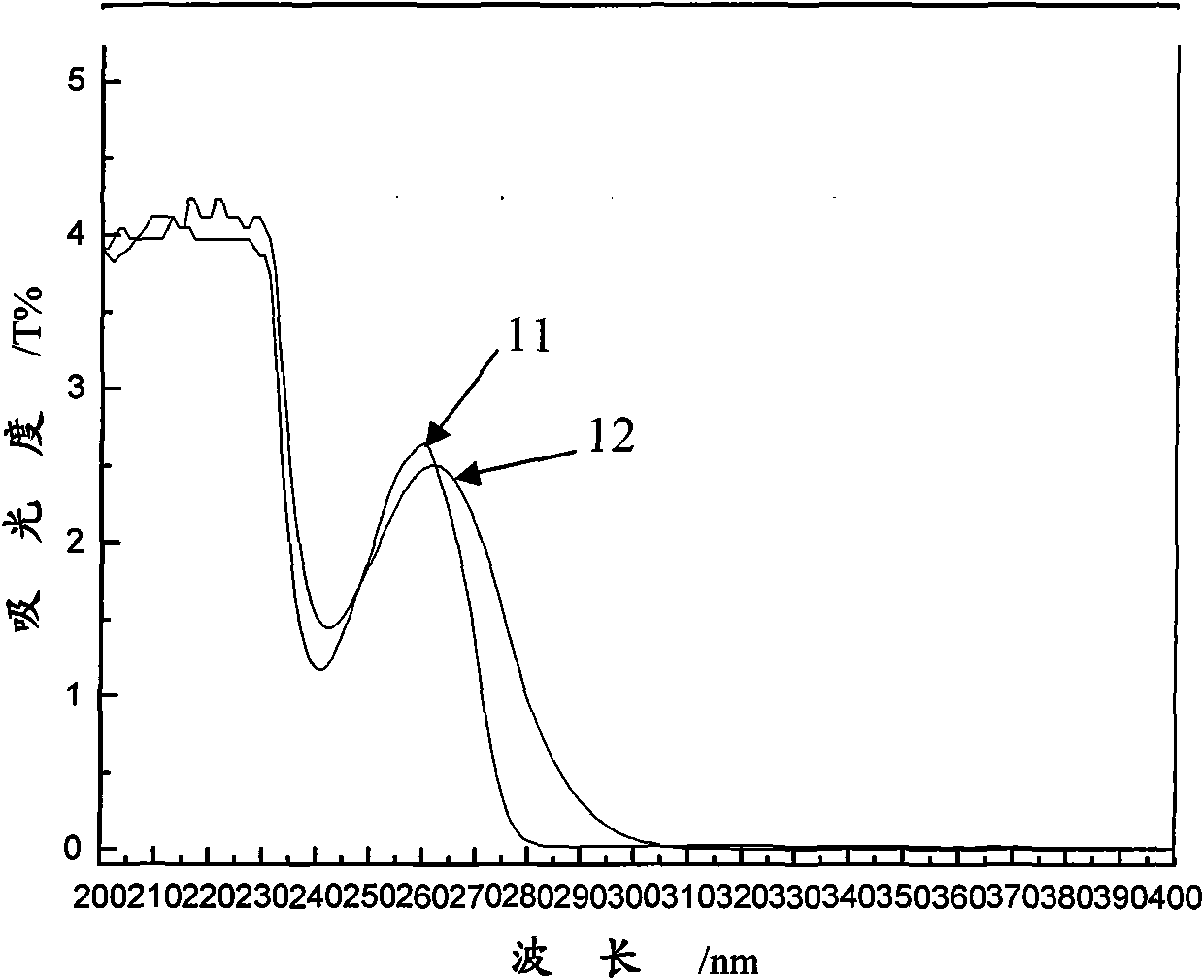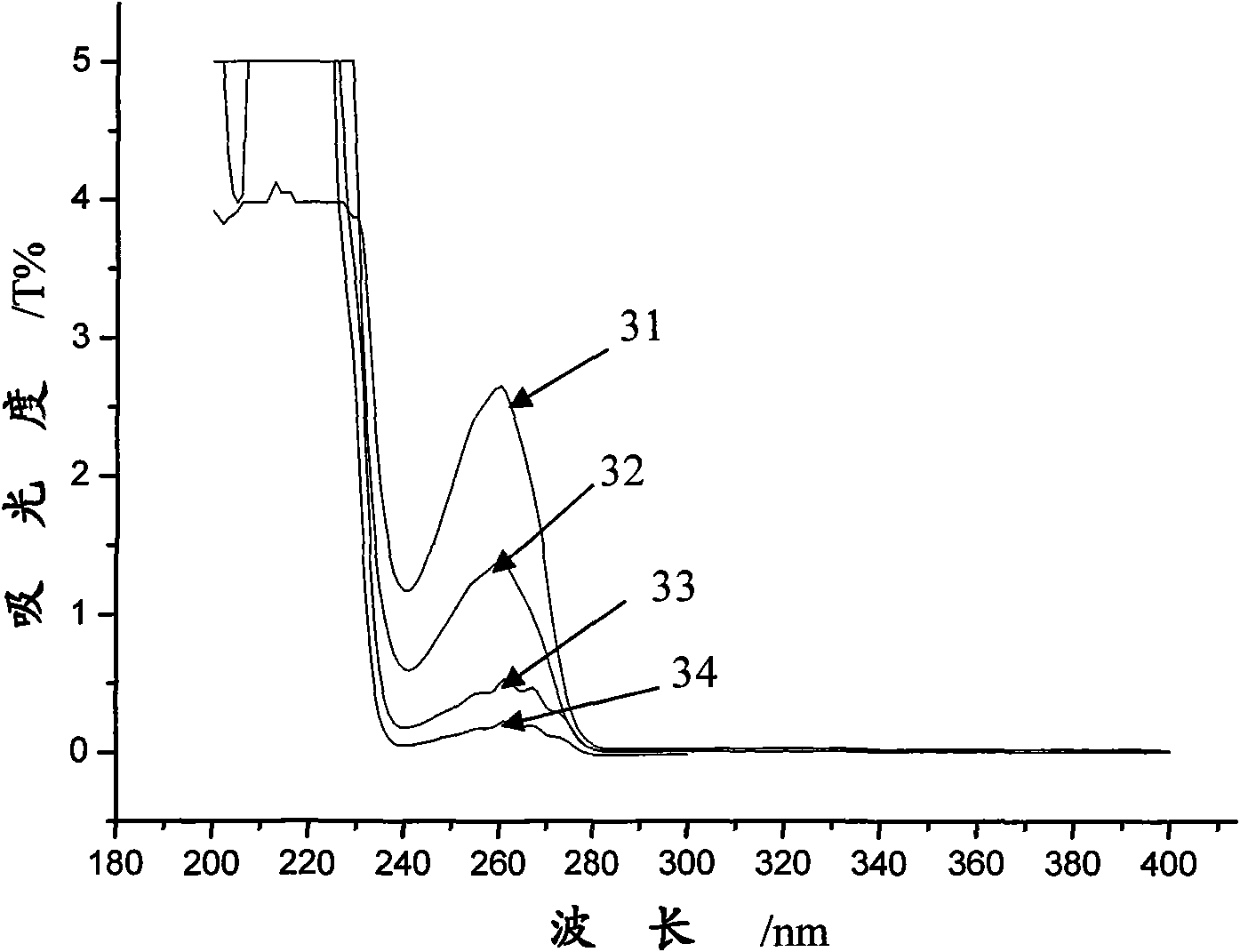Method for determining content of sodium p-toluenesulfinate in reduction process of p-toluenesulfonyl chloride
A technology of sodium toluenesulfinate and p-toluenesulfonyl chloride, applied in the direction of color/spectral characteristic measurement, etc., can solve the problems of detection result error, analysis of sodium toluenesulfinate, difficulty in improving the reduction reaction process of toluenesulfonyl chloride, etc., and achieve The effect of meeting the needs of detection sensitivity
- Summary
- Abstract
- Description
- Claims
- Application Information
AI Technical Summary
Problems solved by technology
Method used
Image
Examples
Embodiment 1
[0015] Preparation of standard solutions of sodium p-toluenesulfonate and sodium p-toluenesulfinate
[0016] Preparation of standard solution of sodium p-toluenesulfonate
[0017] Accurately weigh 0.3884g (0.002mol) of sodium p-toluenesulfonate, dissolve it in an appropriate amount of distilled water and carefully transfer it into a 100ml volumetric flask to prepare a 0.02mol / l sodium p-toluenesulfonate standard solution. Then take the above 0.02mol / l sodium p-toluenesulfonate standard solution 50ml, 25ml, 10ml, 5ml to 100ml volumetric flasks, and prepare 0.01mol / , 0.005mol / l, 0.002mol / l, 0.001mol / l Standard solution of sodium toluenesulfonate.
[0018] Preparation of standard solution of sodium p-toluenesulfinate
[0019] Accurately weigh 0.1782 g (0.001 mol) of purified sodium p-toluene sulfinate, dissolve it with an appropriate amount of distilled water, and transfer it into a 100 ml volumetric flask to prepare a 0.01 mol / l sodium p-toluene sulfinate standard solution.
Embodiment 2
[0021] Determination of Absorption Wavelength of Sodium p-Toluene Sulfinate Solution
[0022] Take 0.01mol / l, 0.005mol / l, 0.002mol / l, 0.001mol / l sodium p-toluenesulfonate standard solution and 0.01mol / l sodium p-toluenesulfinate standard solution in Example 1, respectively, with distilled water For blank sample, carry out UV full-wavelength scanning at 200-400nm with UV2500 UV / Vis spectrophotometer, and the resulting spectrum is as follows figure 1 shown. It can be seen from the figure that the maximum absorption wavelengths of the two substances, sodium p-toluenesulfonate and sodium p-toluenesulfinate, are not very different, so the maximum absorption wavelength cannot be used to analyze the content of these two substances. like figure 2 , 3, at the wavelength of 282nm, sodium p-toluenesulfonate has no absorption, but sodium p-toluenesulfinate still has a strong absorption, so 282nm is selected as the best measurement wavelength for sodium p-toluenesulfinate.
Embodiment 3
[0024] Drawing of standard curve of sodium p-toluenesulfinate solution
[0025] The measurement conditions of UV / Vis spectrophotometer are as follows: wavelength is fixed at λ=282nm; bandwidth=2nm; integration time=10s; temperature during measurement is 20±2°C;
[0026] Accurately draw 20ml, 15ml, 12.5ml, 10ml and 5ml of the standard solution of sodium p-toluenesulfinate solution in Example 1 into a 100ml volumetric flask, and dilute to the mark with distilled water to obtain concentrations of 0.002mol / l, 0.0015mol / l, 0.00125 The standard solutions of mol / l, 0.001mol / l and 0.0005mol / l, under the wavelength of 282nm of UV2500 ultraviolet / visible light spectrophotometer, use a 1cm cuvette, take distilled water as a reference solution, read the absorbance and draw a standard curve ( See Figure 4 ), the regression equation is y=0.01688+392.83612×X, the corresponding correlation coefficient R=0.99865, and the accuracy of the experimental data is good.
PUM
 Login to View More
Login to View More Abstract
Description
Claims
Application Information
 Login to View More
Login to View More - R&D
- Intellectual Property
- Life Sciences
- Materials
- Tech Scout
- Unparalleled Data Quality
- Higher Quality Content
- 60% Fewer Hallucinations
Browse by: Latest US Patents, China's latest patents, Technical Efficacy Thesaurus, Application Domain, Technology Topic, Popular Technical Reports.
© 2025 PatSnap. All rights reserved.Legal|Privacy policy|Modern Slavery Act Transparency Statement|Sitemap|About US| Contact US: help@patsnap.com



